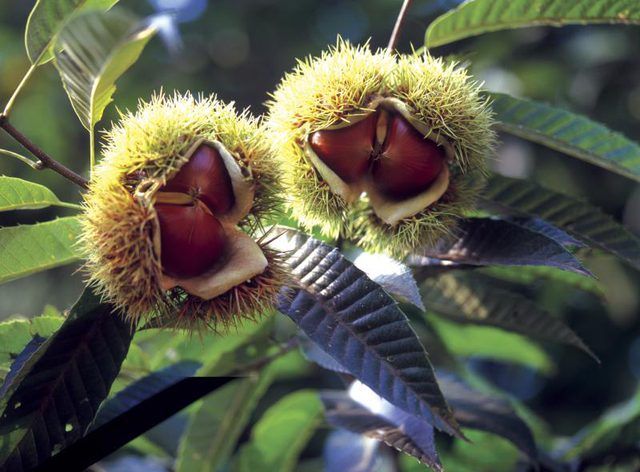Bulbs
Flower Basics
Flower Beds & Specialty Gardens
Flower Garden
Garden Furniture
Garden Gnomes
Garden Seeds
Garden Sheds
Garden Statues
Garden Tools & Supplies
Gardening Basics
Green & Organic
Groundcovers & Vines
Growing Annuals
Growing Basil
Growing Beans
Growing Berries
Growing Blueberries
Growing Cactus
Growing Corn
Growing Cotton
Growing Edibles
Growing Flowers
Growing Garlic
Growing Grapes
Growing Grass
Growing Herbs
Growing Jasmine
Growing Mint
Growing Mushrooms
Orchids
Growing Peanuts
Growing Perennials
Growing Plants
Growing Rosemary
Growing Roses
Growing Strawberries
Growing Sunflowers
Growing Thyme
Growing Tomatoes
Growing Tulips
Growing Vegetables
Herb Basics
Herb Garden
Indoor Growing
Landscaping Basics
Landscaping Patios
Landscaping Plants
Landscaping Shrubs
Landscaping Trees
Landscaping Walks & Pathways
Lawn Basics
Lawn Maintenance
Lawn Mowers
Lawn Ornaments
Lawn Planting
Lawn Tools
Outdoor Growing
Overall Landscape Planning
Pests, Weeds & Problems
Plant Basics
Rock Garden
Rose Garden
Shrubs
Soil
Specialty Gardens
Trees
Vegetable Garden
Yard Maintenance
Growing American Chestnut Trees from Seed
Growing American Chestnut Trees from Seed. The American chestnut (Castanea dentata) has a sad story. This majestic native tree was decimated when a fungus blight disease of Chinese chestnut (Castanea mollissima) accidentally entered the United States in the early 1900s. By the 1940s, most large trees were gone. Stump-sprouted and seedling American...

The American chestnut (Castanea dentata) has a sad story. This majestic native tree was decimated when a fungus blight disease of Chinese chestnut (Castanea mollissima) accidentally entered the United States in the early 1900s. By the 1940s, most large trees were gone. Stump-sprouted and seedling American chestnuts still exist, but trees eventually die from blight. Realize that if you plant American chestnut seeds, they'll grow at first, but sooner or later, they'll succumb to chestnut blight. Relatively blight-resistant hybrids between American chestnuts and Chinese chestnuts are available.
Planting Information
Plant the seeds directly in the ground or in containers. For direct seeding, sow chestnuts right after they are harvested and cleaned in the fall or store the nuts and plant them in early spring. American chestnut often has over 90 percent germination. Chestnuts need two to three months of temperatures between 32 and 34 degrees Fahrenheit for germination. Freezing kills the seeds, although an established American chestnut tree is hardy in U.S. Department of Agriculture plant hardiness zones 5 through 8, as is Chinese chestnut.
Storing Chestnuts
If you're not planting them immediately, store chestnuts in a refrigerator. Moisten milled sphagnum with 2 cups of water per gallon of peat moss. Meanwhile, punch numerous holes with a toothpick in a plastic bag. Layer moistened moss with the chestnuts in the bag. Don't allow the seeds to touch each other or the bag sides. If kept at 32 to 34 degrees F, the nuts remain viable for two to three years.
Direct Sowing Chestnuts
The American Chestnut Foundation suggests planting at least five trees to allow for mortality before trees reach bearing age. You need two trees for nut production. As soon as soil is workable in early spring, dig a 3- to 6-inch-deep hole where you want the chestnut to grow. Use a mixture of equal parts perlite, vermiculite and peat to fill the hole within 1/2 to 1 inches of the top. If the chestnut has begun to sprout, make a hole with your finger or a twig that is the length of the radical, or seed root. Put the chestnut on its side with the radical pointing down into the hole. Cover the seed with more of the mixture. Cover fall-planted seeds with 6 to 18 inches of mulch. Put a 3-inch-wide cylinder of 10-inch aluminum flashing buried 2 inches in the soil around the planted seed to protect it from hungry wildlife.
Starting Chestnuts in Containers
Chestnuts need at least 12 inches to sprout into when they germinate, such as a 1- to 2-quart clean cardboard milk carton with the bottom removed. Plant seeds in January or February. Cover the bottom of a plastic milk crate with a piece of window screening and then add a piece of 1/4-inch hardware cloth. Place the empty milk cartons closely together on top of the hardware cloth, fill them with the back-fill medium used for direct seeding, and plant the seeds on their sides 1/2 to 1 inch deep. After watering the containers thoroughly, place the milk crate in a greenhouse or sunny window, and keep the growing medium evenly moist. Fertilize seedlings weekly with a 30-10-10 water-soluble fertilizer formulated for acid-loving plants at the application rate of 1/2 teaspoon per gallon of water for indoor plants. Gradually accustom seedlings to outdoor conditions over a two-week period after all danger of frost is past.